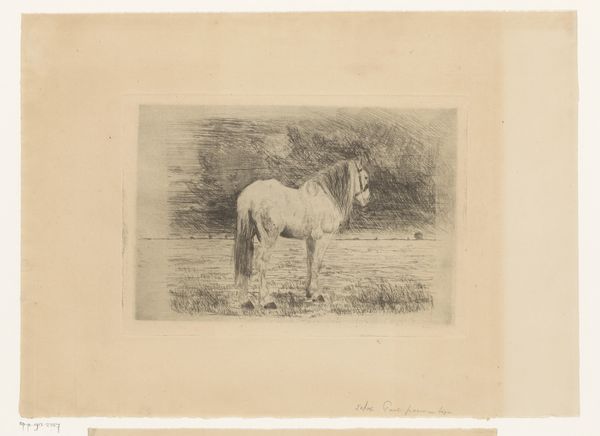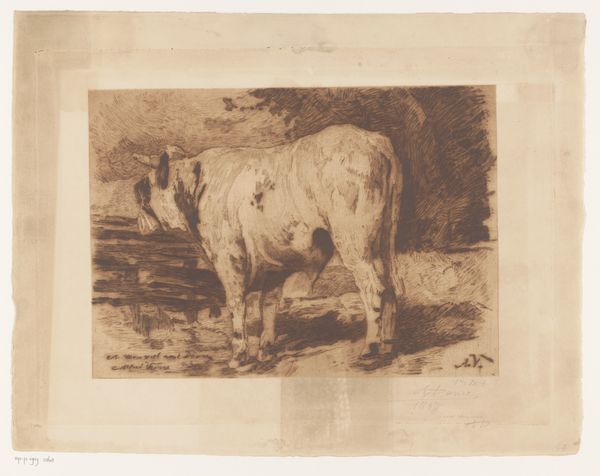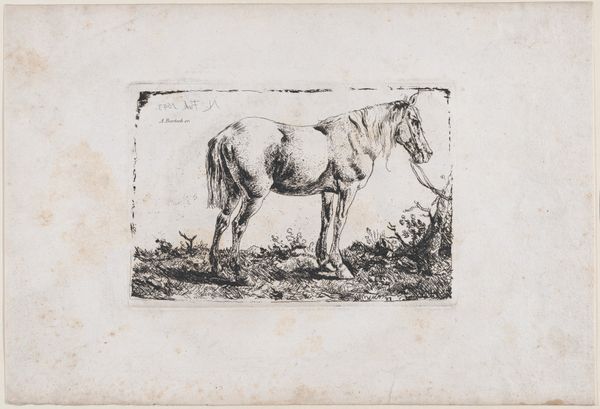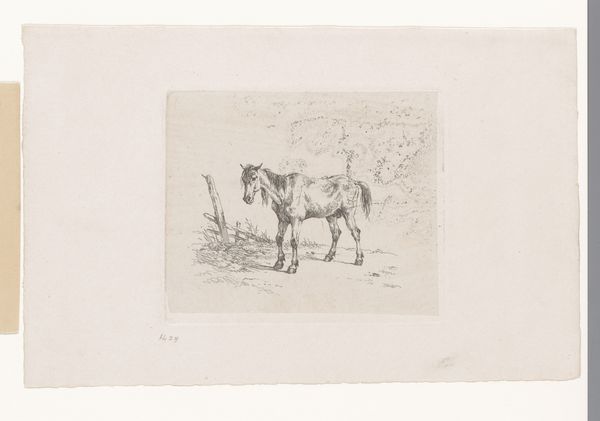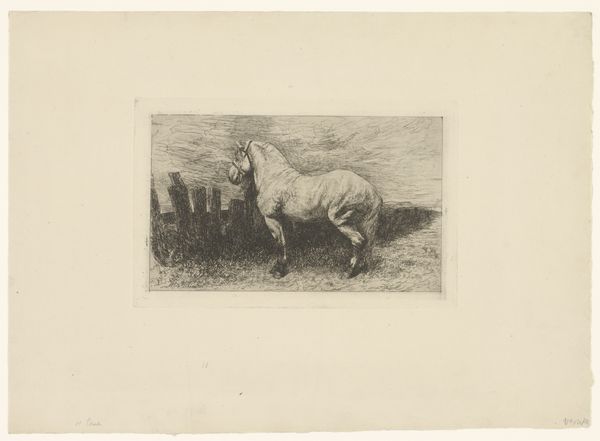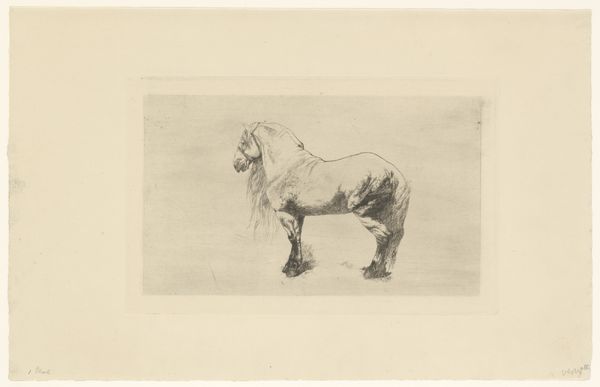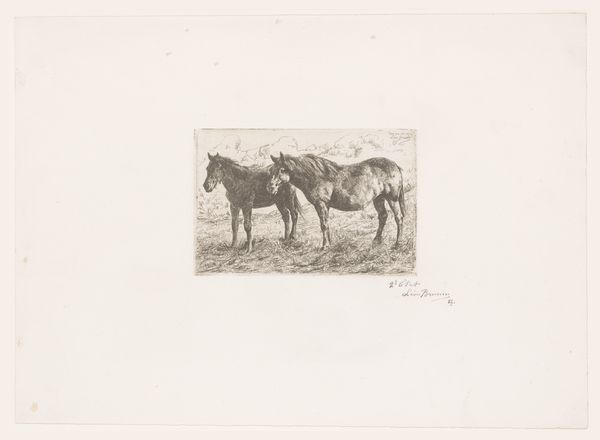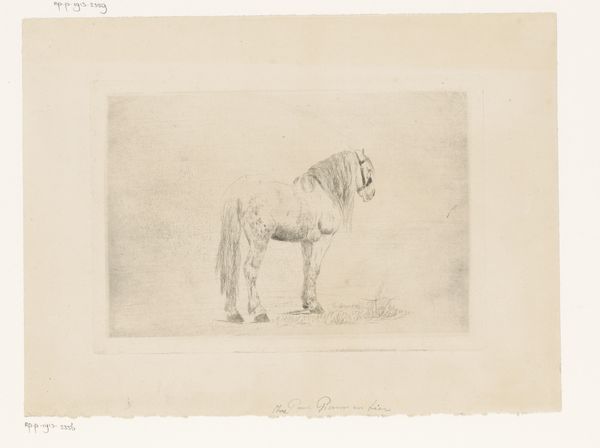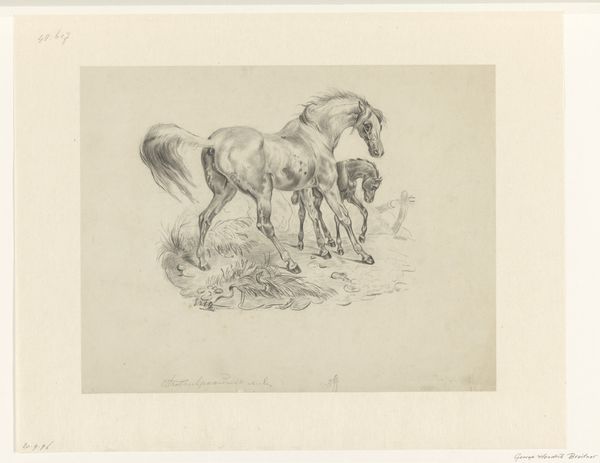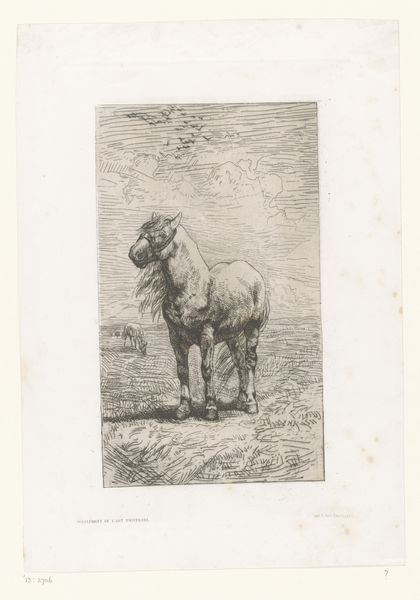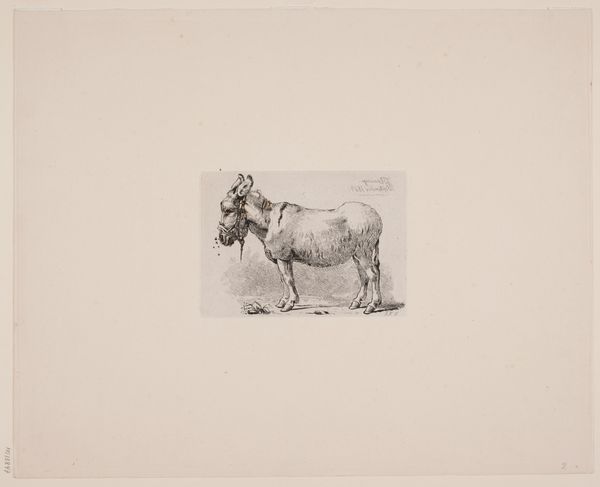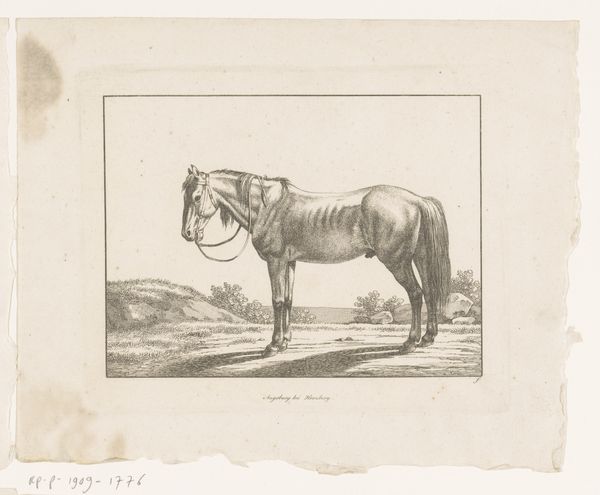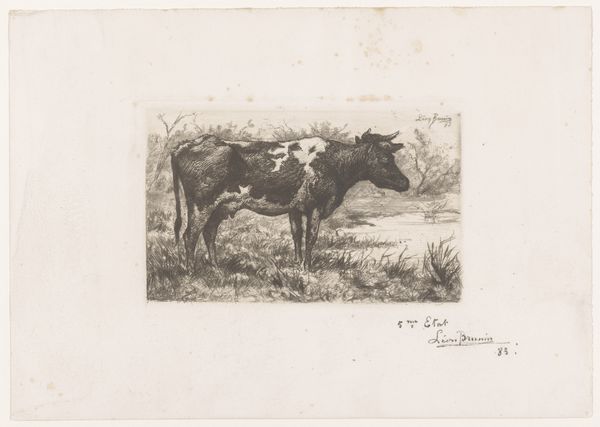
print, etching
#
animal
# print
#
etching
#
landscape
#
horse
#
realism
Dimensions: height 157 mm, width 228 mm
Copyright: Rijks Museum: Open Domain
Editor: Here we have Paul Parmentier’s "Paard," which translates to "Horse," created between 1864 and 1902. It’s an etching, a print, and it strikes me as very simple, almost humble in its depiction. What draws your attention when you look at this work? Curator: For me, it’s the materiality of the printmaking process itself that resonates. Look at the cross-hatching and the evident labor involved in creating this image through etching. Think about the acid biting into the metal plate, the repeated process of applying ink, wiping it away, and pressing it onto paper. What does that say about how images were made and consumed during this period? Editor: That’s interesting. I was focused more on the subject, the horse in a landscape. But you’re saying we should consider the *how* as much as the *what*? Curator: Precisely. Consider the social context: Who had access to this technology? Who could afford prints? This piece offers a glimpse into the means of production and the social circulation of images, blurring the lines between fine art and the work involved in creating it. This isn't just about the horse, it's about labor. Editor: I never considered how much labor went into creating this seemingly simple etching. Seeing it as a product of both artistic skill and material processes really changes my perspective. Thanks! Curator: My pleasure. It is crucial to go beyond what is visible to think about what went into creating the artwork, as well as what came after its creation: Who saw it? How did they value it? The print is not just an object but also a material historical trace.
Comments
No comments
Be the first to comment and join the conversation on the ultimate creative platform.
